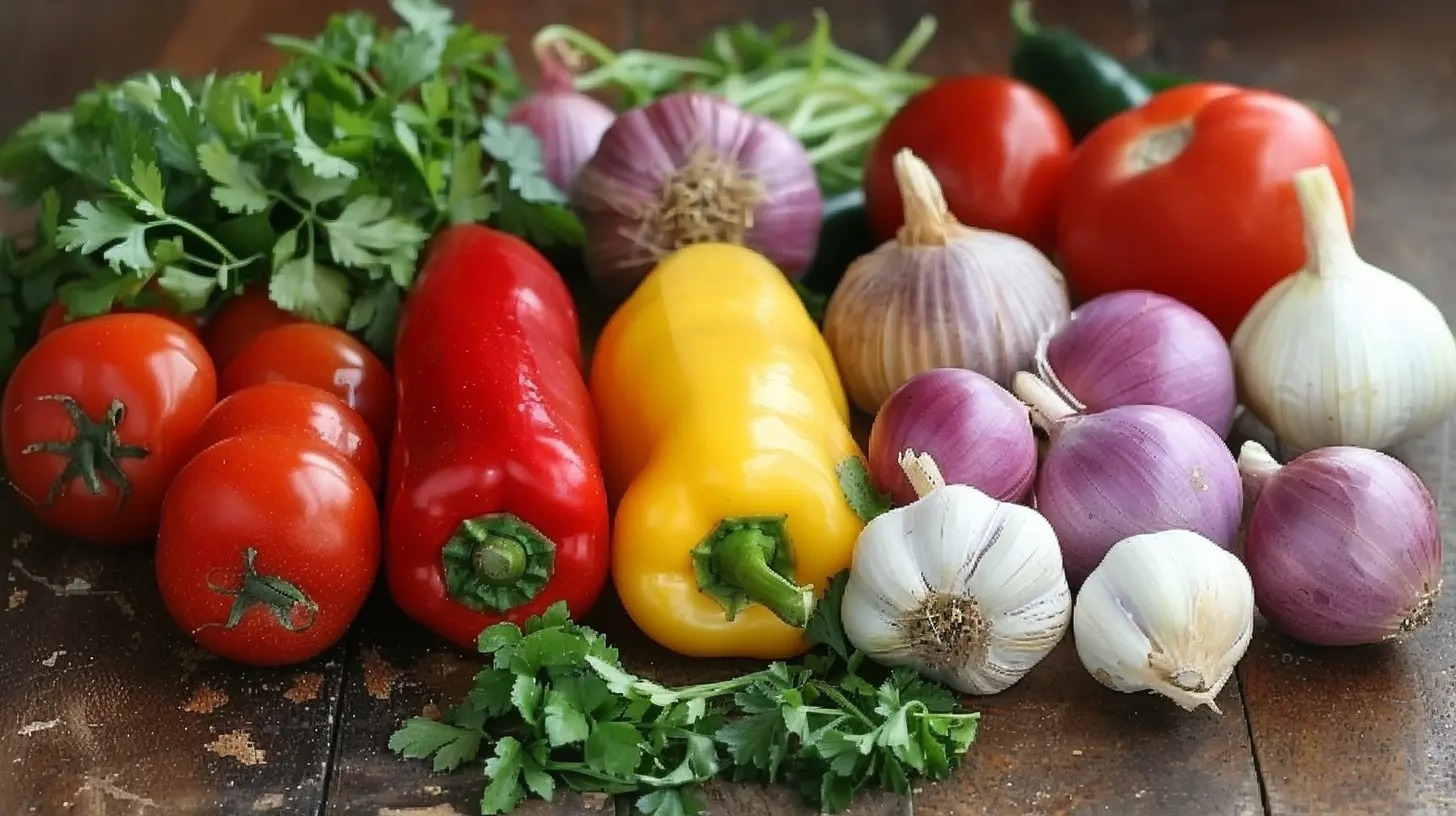Plant-Based Diets and Their Role in Chronic Pain Management
16 December 2024
Chronic pain—doesn't it sound like a nagging roommate who refuses to leave? It's exhausting, draining, and can feel never-ending. For anyone who's been stuck in this cycle, you know how disruptive it is to everyday life. While medication, physical therapy, and other interventions are common approaches for managing chronic pain, there’s a growing conversation around the role of nutrition—specifically, plant-based diets. Could the foods you eat be a game-changer in managing that persistent discomfort? Let’s dive into the juicy details.
What Is a Plant-Based Diet?
First off, let’s clear up any confusion. A plant-based diet focuses primarily on foods derived from plants. This includes fruits, vegetables, whole grains, legumes, nuts, and seeds. While it doesn’t strictly mean going 100% vegan, it does emphasize plant-forward eating with minimal consumption of animal products. Think of it as giving vegetables the starring role on your plate, while meat and dairy take the supporting cast position.Now, why are we even talking about this in the context of chronic pain? Great question. Let me explain. 
The Link Between Diet and Chronic Pain
Chronic pain is often linked to conditions like arthritis, fibromyalgia, migraines, and neuropathy, among others. While the causes of these issues vary, one common factor is inflammation. Ever stubbed your toe or gotten a paper cut? That swelling and redness is inflammation at work, part of your body’s natural healing process. But when inflammation becomes chronic, it can wreak havoc on your system, causing pain that overstays its welcome.Here’s the kicker: a lot of the foods we eat can either turn up or turn down the inflammation dial. Processed foods, saturated fats, and excessive sugar? Those are like throwing gasoline on the fire. On the other hand, plant-based foods—rich in antioxidants, vitamins, and minerals—can help put that fire out. It’s like giving your body a chill pill, but tastier. 
How Plant-Based Diets Tackle Chronic Pain
So, what’s the science behind it? Let’s break it down.1. Anti-Inflammatory Powerhouses
Plant-based foods are brimming with compounds that combat inflammation. For example:- Fruits and Vegetables: Rich in antioxidants like vitamin C and beta-carotene, these nutrients act like tiny bodyguards, protecting your cells from damage and reducing inflammation.
- Omega-3 Fatty Acids: Found in flaxseeds, chia seeds, and walnuts, these healthy fats are known to soothe inflammation.
2. Gut Health Connection
Did you know your gut plays a sneaky role in how your body processes pain? A diet high in fiber (hello, plants!) promotes a healthy gut microbiome. A balanced microbiome can reduce inflammation and even improve your pain tolerance. It’s like having a personal cheerleading squad in your digestive system.3. Weight Management
Carrying extra weight can put added stress on your joints, amplifying chronic pain—especially in conditions like osteoarthritis. The good news? Plant-based diets are often naturally lower in calories and high in fiber, making it easier to maintain a healthy weight without feeling deprived.4. Reducing Oxidative Stress
Oxidative stress happens when there’s an imbalance between free radicals and antioxidants in your body. It’s like leaving a metal bike in the rain—it starts to rust. This “rusting” in your body exacerbates chronic pain. Plant-based diets, with their high antioxidant content, can help neutralize free radicals and reduce oxidative stress.
Specific Chronic Pain Conditions and the Role of Plant-Based Diets
1. Arthritis
For those dealing with arthritis, plant-based diets may feel like a breath of fresh air. Studies have shown that adopting a plant-based lifestyle can help reduce joint pain and stiffness. Foods like kale, spinach, and cherries offer anti-inflammatory properties to ease the discomfort.2. Fibromyalgia
This condition is a mystery wrapped in pain, often accompanied by fatigue and brain fog. While there’s no one-size-fits-all solution, many fibromyalgia patients report reduced pain levels after switching to a predominantly plant-based diet. The high nutrient density of plant-based foods helps support overall body function, which may contribute to symptom relief.3. Migraines
Did you know that certain plant foods, like leafy greens, can play a role in reducing the frequency of migraines? Why? Magnesium. It’s a mineral that helps relax nerves and muscles, and it’s found in abundance in plant-based foods like spinach, almonds, and avocados.Making the Switch: Practical Tips for a Plant-Based Diet
Okay, I hear you—going plant-based sounds great in theory, but where do you even start? Don’t worry, I’ve got your back.1. Start Small
No need to go full broccoli warrior overnight. Begin by swapping out one or two meals a week for plant-based alternatives. Maybe a black bean taco instead of beef or a hearty lentil soup instead of chicken noodle. Baby steps.2. Stock Up on Staples
Having the right ingredients on hand can make all the difference. Stock your pantry with quinoa, lentils, nuts, seeds, and a rainbow of spices. These can form the backbone of countless delicious meals.3. Experiment with Plant Proteins
One of the biggest misconceptions about plant-based diets is that they lack protein. Spoiler: they don’t. Beans, lentils, tofu, tempeh, and even whole grains like quinoa can pack a protein punch.4. Make It Flavorful
This isn’t about choking down boring salads. Use spices, herbs, and sauces to make your meals pop. Think turmeric for its anti-inflammatory properties or a drizzle of tahini for a creamy, nutty flavor.5. Listen to Your Body
Switching up your diet can feel like a big change, so pay attention to how your body responds. Are certain foods making you feel more energized? Less achy? Use this as a guide to tailor your approach.Debunking Myths About Plant-Based Diets
By now, you might be wondering, “This all sounds good, but isn’t going plant-based too restrictive?” Here’s the truth: it’s not about depriving yourself. It’s about adding more nutrient-packed foods to your plate. Think abundance, not limitation.Worried about dining out? Most restaurants these days have plant-based options, or you can easily customize meals. And no, you don’t have to say goodbye to your favorite comfort foods. Vegan mac and cheese, anyone?
Real-Life Success Stories
Still skeptical? Let me give you a real-life example. Jane, a 55-year-old woman struggling with chronic back pain, reluctantly decided to try a plant-based diet after conventional treatments didn’t work. Within weeks, she noticed a significant reduction in inflammation and pain levels. Her energy improved, she slept better, and she felt more in control of her body. While everyone’s journey is unique, Jane’s story is a testament to how powerful food can be.Final Thoughts
Chronic pain management is no easy feat, and there’s no one-size-fits-all solution. But the evidence supporting plant-based diets as a tool for reducing inflammation, managing pain, and improving overall quality of life is hard to ignore. Whether you’re ready to go fully plant-based or simply want to add more fruits and veggies to your plate, every small step can make a big difference.So, what do you say? Ready to give it a shot? Your body just might thank you.
all images in this post were generated using AI tools
Category:
Chronic PainAuthor:

Angelo McGillivray
Discussion
rate this article
13 comments
Nina Ross
Excellent insights on plant-based diets! They offer promising benefits for chronic pain management through anti-inflammatory properties and nutrient density.
April 8, 2025 at 4:00 AM

Angelo McGillivray
Thank you! I'm glad you found the insights valuable. Plant-based diets indeed have great potential for managing chronic pain.
Vanya Hurst
Thank you for highlighting the benefits of plant-based diets in chronic pain management. Your insights offer valuable information for those seeking alternative approaches to improve their health and well-being.
March 17, 2025 at 4:20 PM

Angelo McGillivray
Thank you for your kind words! I'm glad you found the information helpful in exploring alternative health approaches.
Briar McFee
This article brilliantly highlights how plant-based diets can be a powerful tool in managing chronic pain. By emphasizing anti-inflammatory properties and nutrient density, it encourages readers to consider dietary changes not just for health, but also for enhanced quality of life. Great insights!
February 7, 2025 at 6:02 AM

Angelo McGillivray
Thank you for your kind words! I'm glad you found the insights on plant-based diets and chronic pain management helpful.
Lucas McDougal
A plant-based diet can significantly reduce inflammation and improve overall health, offering a natural approach to managing chronic pain. Emphasizing whole foods may empower individuals to reclaim their well-being.
February 1, 2025 at 6:02 PM

Angelo McGillivray
Thank you for your insightful comment! A plant-based diet indeed plays a crucial role in inflammation reduction and chronic pain management. Emphasizing whole foods can empower many on their wellness journey.
Blade McGhee
A plant-based diet may offer significant benefits for chronic pain management by reducing inflammation, improving overall health, and promoting weight loss. Incorporating nutrient-rich foods can enhance quality of life for those suffering from pain.
January 27, 2025 at 12:34 AM

Angelo McGillivray
Thank you for your insightful comment! Indeed, a plant-based diet can be a powerful tool for managing chronic pain by targeting inflammation and supporting overall health.
Clementine Kirkland
Thank you for shedding light on the potential benefits of plant-based diets for chronic pain management. Your insights offer hope for many seeking alternative ways to relieve their suffering.
January 20, 2025 at 3:54 AM

Angelo McGillivray
Thank you for your kind words! I'm glad the article resonated with you and hope it inspires further exploration of plant-based diets for pain relief.
Xylo Beck
Insightful article! Plant-based diets truly make a difference.
January 11, 2025 at 4:48 AM

Angelo McGillivray
Thank you! I'm glad you found it insightful—plant-based diets can indeed have a significant impact on chronic pain management.
Maris Moses
Great insights! Plant-based diets can truly support healing.
January 7, 2025 at 5:06 PM

Angelo McGillivray
Thank you! I'm glad you found the insights valuable. Plant-based diets indeed play a significant role in healing and managing chronic pain.
Isla McPhail
Embracing a plant-based diet can be a powerful step towards managing chronic pain. By nourishing our bodies with vibrant, whole foods, we empower ourselves to heal and thrive. Every meal is an opportunity to foster health and vitality!
December 31, 2024 at 3:34 AM

Angelo McGillivray
Thank you for your insightful comment! Embracing a plant-based diet truly does empower individuals to improve their health and manage chronic pain effectively.
Ford Coffey
A plant-based diet may offer relief for chronic pain sufferers by reducing inflammation and promoting overall health. However, individual results vary, and it’s essential to consult with healthcare professionals before making significant dietary changes to ensure balanced nutrition and effective pain management.
December 27, 2024 at 4:02 AM

Angelo McGillivray
Thank you for your insightful comment! It's crucial to consider individual needs and seek professional guidance when exploring dietary changes for chronic pain management.
Matilda Lewis
This article compellingly highlights the potential of plant-based diets in chronic pain management. By emphasizing anti-inflammatory properties and nutrient density, it invites further exploration into how dietary choices can significantly influence pain perception and overall well-being.
December 25, 2024 at 4:52 PM

Angelo McGillivray
Thank you for your thoughtful comment! I'm glad you found the article compelling and appreciate your insights on the impact of plant-based diets on chronic pain management.
Theo McDowney
Great insights! Incorporating plant-based foods can indeed support overall health and potentially alleviate chronic pain.
December 17, 2024 at 6:01 PM

Angelo McGillivray
Thank you! I'm glad you found the insights valuable. Incorporating plant-based foods can make a significant difference in health and pain management.
Levi McKenzie
Great insights! Plant-based diets really can make a difference!
December 17, 2024 at 3:56 AM

Angelo McGillivray
Thank you! I'm glad you found the insights helpful. Plant-based diets can indeed have a significant impact on chronic pain management.
MORE POSTS

Understanding Eczema and How to Manage It

Managing Anxiety: Techniques for a Calmer Mind

The Role of Sound Healing in Stress Reduction

The Impact of Blue Light on Your Sleep Cycle

Debunking Common Fitness Myths: What Really Works?

Telling Your Chronic Pain Story: Why It Matters

Gluten-Free Beer, Wine, and Spirits: What’s Safe to Drink?

The Best Post-Workout Foods for Muscle Recovery

The Healing Power of Laughter in Daily Life